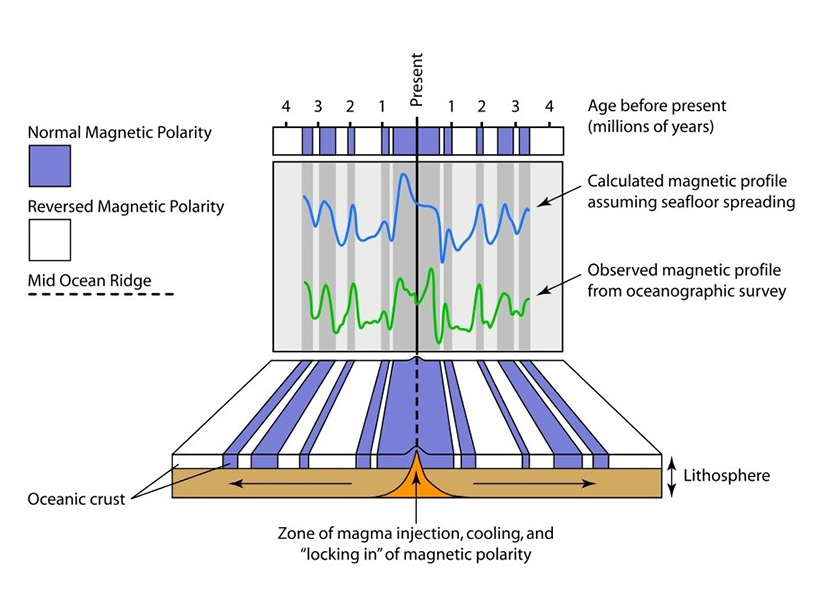Source: Journal of Geophysical Research: Solid Earth
Every so often, Earth’s geomagnetic field reverses, with magnetic north and south swapping places over the course of a few millennia. Researchers have tracked these reversals, which occur every few tens of thousands to millions of years, at mid-ocean ridges, where tectonic plates are pulling apart. As lava erupts at these ridges and solidifies to form new ocean crust, it records the orientation of the planet’s magnetic field, creating alternating blocks of rock that are magnetized in opposite directions and that generate magnetic anomalies measured by ship surveys. Combining these magnetic signatures with radioisotopic dating of the magnetized rocks has provided timelines for past reversals called geomagnetic polarity timescales (GPTSs).
Malinverno et al. update the GPTS for a period stretching from late in the Cretaceous roughly 84 million years ago until the end of the Eocene 33 million years ago.
Previous GPTSs assumed that ocean spreading rates in the South Atlantic were constant or smoothly varying over time. But in data collected at other mid-ocean ridges, spreading rates appeared to change over time, sometimes erratically, creating uncertainty in the GPTS. Here the researchers used up-to-date magnetic anomaly data collected during 154 ship tracks across the North and South Pacific, South Atlantic, and Indian Oceans, as well as Monte Carlo computational methods, to smooth out spreading rates across all the ocean basins, thereby minimizing spreading rate variations and reducing uncertainty in the GPTS.
The findings contribute to researchers’ understanding of the history of ocean spreading. In particular, the study revealed a major global change in spreading rates between 50 million and 45 million years ago. Around that time, the Indian subcontinent slammed into the Eurasian plate, slowing tectonic spreading in the Indian Ocean. At the same time, spreading rates roughly doubled in the South Atlantic and North Pacific, coinciding with the timing of a bend in the Hawaii-Emperor seamount chain. The results could also help resolve timescale inconsistencies in astrochronology studies, the authors note. (Journal of Geophysical Research: Solid Earth, https://doi.org/10.1029/2020JB020034, 2020)
—Kate Wheeling (@katewheeling), Science Writer
Citation:
Wheeling, K. (2020), Steadying mid-ocean ridge spreading rates, Eos, 101, https://doi.org/10.1029/2020EO148647. Published on 04 September 2020.
Text © 2020. AGU. CC BY-NC-ND 3.0
Except where otherwise noted, images are subject to copyright. Any reuse without express permission from the copyright owner is prohibited.
Text © 2020. AGU. CC BY-NC-ND 3.0
Except where otherwise noted, images are subject to copyright. Any reuse without express permission from the copyright owner is prohibited.

